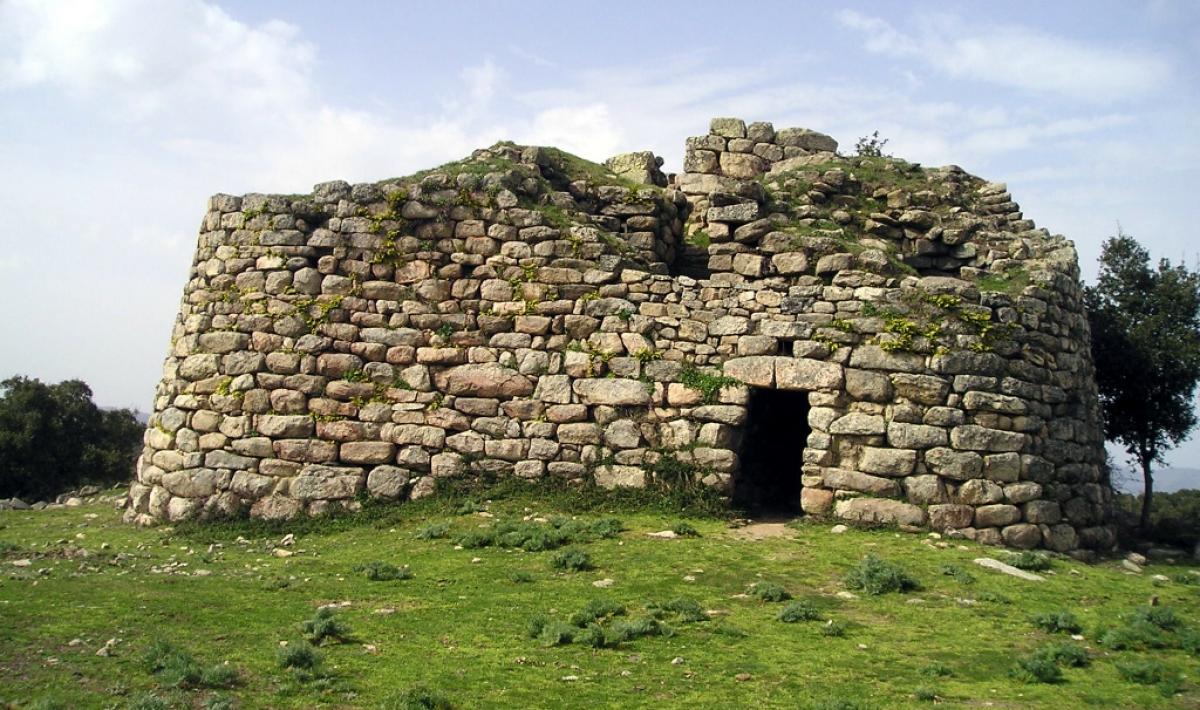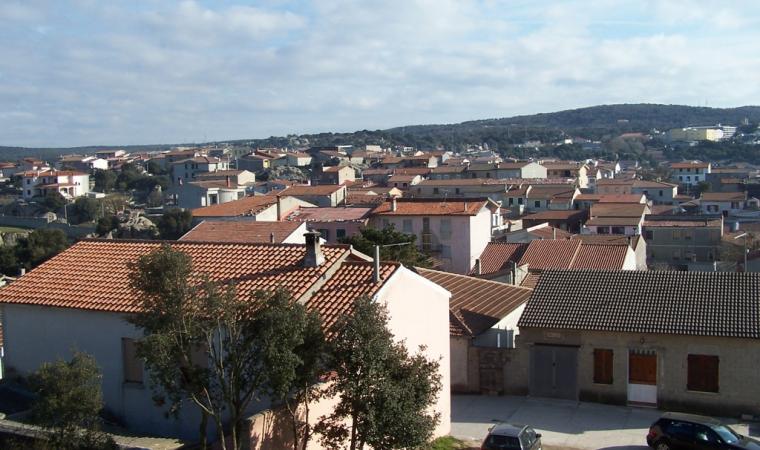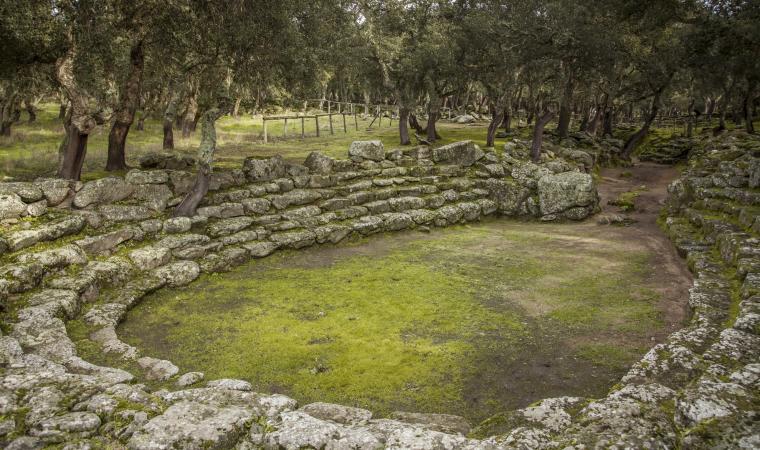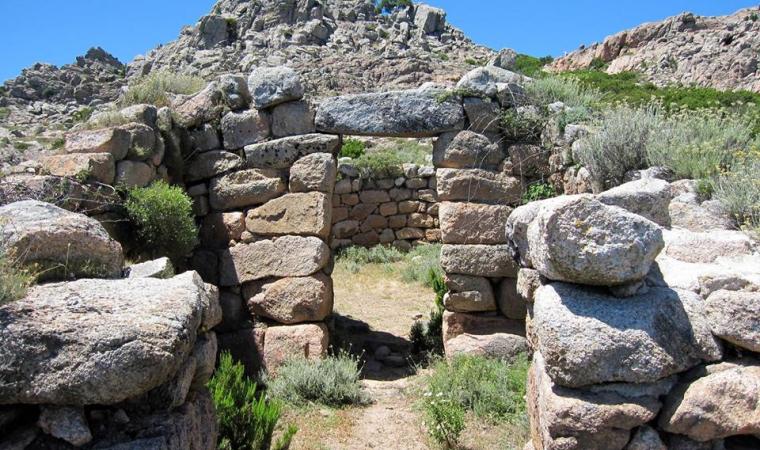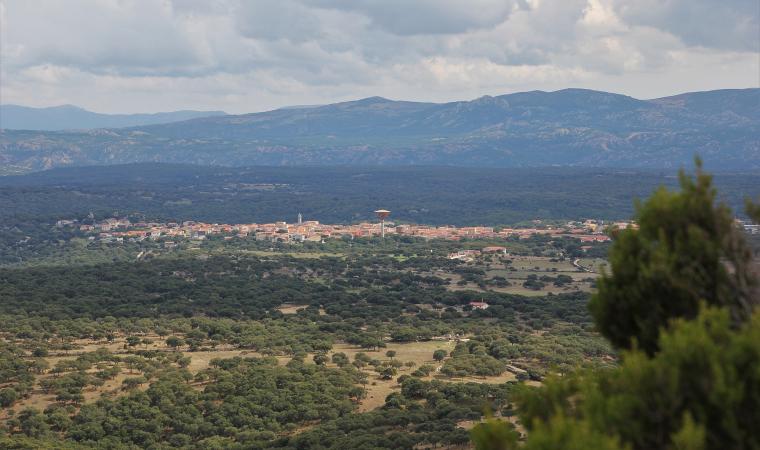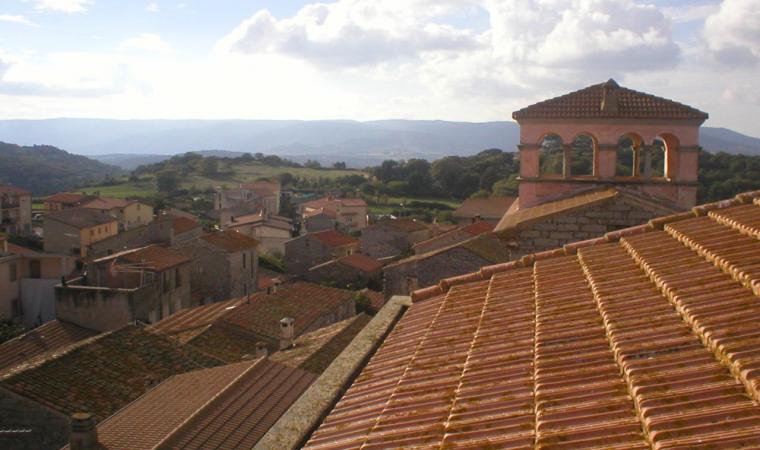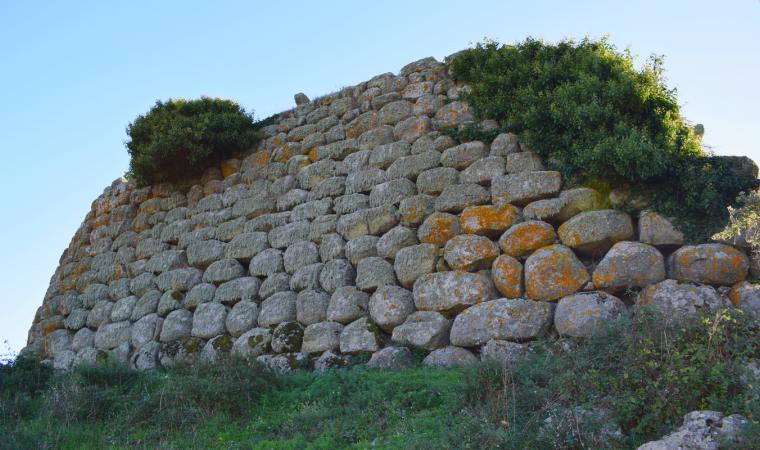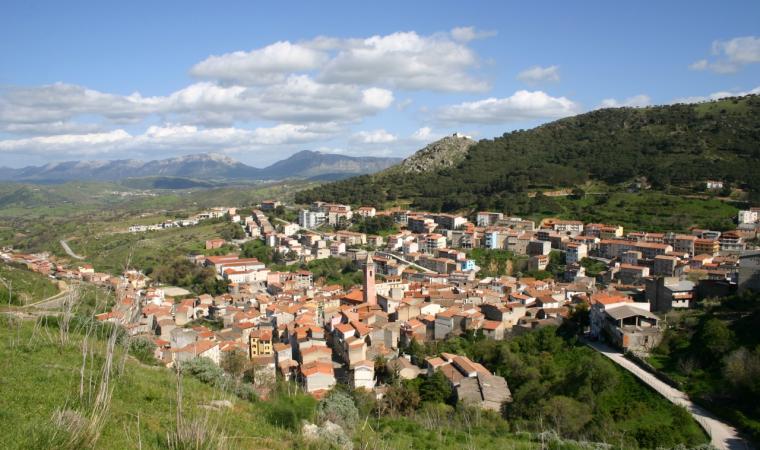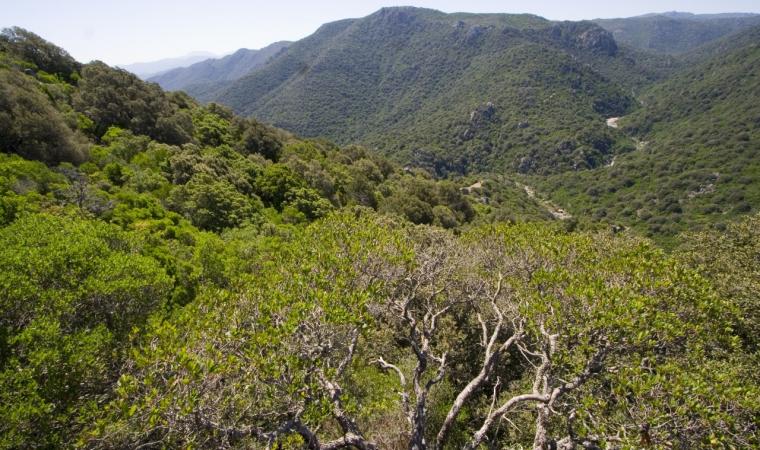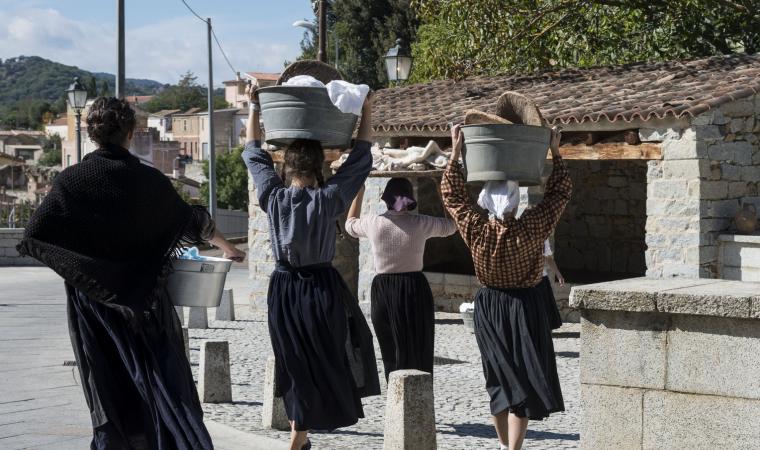It suddenly appears along the road that connects Buddusò, the centre of Monte Acuto, on the border of Gallura, to Bitti, a town in northern Barbagia. The Nuraghe Loelle, hidden among cork oaks and holm oaks, gradually shows its fascinating and mysterious features, perched on a granite outcrop, the main local rock, as it dominates the plateau and the houses of Buddusò.
Its structure is formed by a central tower that leans against a trefoil bastion and it is considered to be of the ‘mixed’ type, as it has characteristics of both ‘corridor’ and tholos nuraghi. In fact, it is assumed to be a protonuraghe converted in subsequent phases to respond to renewed architectural and cultural needs. You will notice the traces of the village of huts, with a circular layout, all around. As you enter, you will be surprised to see that the entrance does not open onto a courtyard or a corridor leading to a central room, as was customary in these Bronze Age buildings. In the Loelle, on the other hand, a flight of steps takes you in a clockwise direction around the tower, leading directly to the second level. Another corridor starts here and, if followed entirely, descends to the ‘ground floor’, while about halfway along it, another ramp climbs to the third level, where the last and main room opens up. Before entering the room, you will notice an apse-shaped niche on the right.
In front of the keep, a bastion crossed by corridors was built, with curtain walls that have a concave-convex line. Outside the bastion, on the east side, there is another distinctive feature of the Loelle: by exploiting a natural ravine, a separate room was created, with a tholos vault, which opens up about one metre below ground level. Moving about a hundred metres away from the nuraghe and the village, you will find a Tomb of Giants, of which the rows of the corridor and traces of the exedra are visible. Not far away, hidden by oaks and holm oaks, a second tomb appears, also with a few surviving traces, and a small dolmen. The latest mystery that the Loelle area reserves is the probable existence of a sacred well: the news comes from various sources but so far no trace of it has been found.
Along the road from the nuraghe to Buddusò, which is part of a stage of the Rally Italia Sardegna every year, you can also visit the necropolis of Ludurru, dating back to the Final Neolithic period: it has six hypogea dug out of a single granite outcrop. Instead, in the opposite direction, towards Bitti, you will come across one of the greatest expressions of the Nuragic age: it is the Romanzesu village-sanctuary, in the middle of a wood, made up of about a hundred huts and various buildings of worship, including a temple well with a stepped amphitheatre, two with a megaron and a mysterious labyrinth path.

